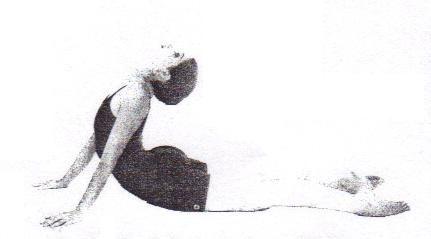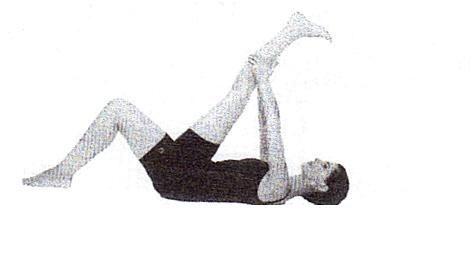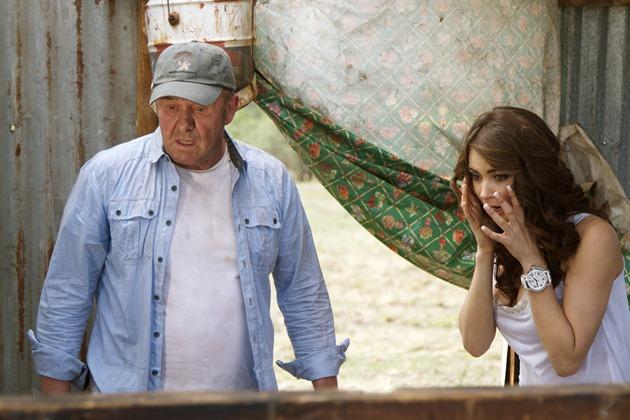Creative Arts

Owned and published by Optimi, a division of Optimi Central Services (Pty) Ltd.
7 Impala Avenue, Doringkloof, Centurion, 0157 info@optimi.co.za www.optimi.co.za
© Optimi
Apart from any fair dealing for the purpose of research, criticism or review as permitted in terms of the Copyright Act, no part of this publication may be reproduced, distributed, or transmitted in any form or by any means, electronic or mechanical, including photocopying, recording, or any information storage and retrieval system without prior written permission from the publisher.
The publisher has no responsibility for the persistence or accuracy of URLs for external or third-party internet websites referred to in this publication, and does not guarantee that any content on such websites is, or will remain, accurate or appropriate.
There are instances where we have been unable to trace or contact the copyright holder. If notified, the publisher will be pleased to rectify any errors or omissions at the earliest opportunity.
Reg. No.: 2011/011959/07

Creative Arts
Facilitator’s guide
Grade 7
LESSON ELEMENTS

LEARNING AIMS
What learners should know at the end of the lesson. Taken from CAPS
IMPORTANT TERMINOLOGY
Sample
New terminology to extend understanding of the subject as part of this lesson
DEFINE
Definitions of concepts to understand the content.
IMPORTANT
Explain misunderstandings; possible confusion regarding existing knowledge.
TIPS
Any information other than the content, to guide learners through the learning process.
FOR THE CURIOUS

Encouragement to do in-depth research about the content. Expand the activity and exercise to such an extent that learners are encouraged to explore. For gifted learners: expanded exercises. For Learners with Special Educational Needs (LSEN): explain the need to complete the basic questions to achieve a passing mark.
ACTIVITY

Sample
Questions throughout the lesson that must be done in order to test the knowledge of the lesson completed.
EXERCISE
In conclusion of the specific Unit. Formative assessment.
CORE CONTENT
Emphasise the core of content; in-depth explanation of a specific section of the lesson; needs to be understood.
STUDY / REVISION
Time spent to study the content in conclusion of the Unit and in preparation for the test or examination
TIMETABLE AND TIME MANAGEMENT
Creative Arts entails the study of and offers exposure to a range of art forms. Its main purpose is to help learners develop into creative and imaginative individuals.
In Grades 7, 8 and 9, two hours per week are allocated to Creative Arts. Learners are going to study only two art forms. Impaq offers learners the opportunity to take Dramatic Studies and Visual Arts as subjects in Grades 10 – 12. We are therefore going to discuss and study only these two art forms in Grades 7 – 9. This is according to the stipulations of CAPS. Learners have to spend a minimum of 10 lesson-hours per unit on each art form.
The lessons in the Study Guide have been arranged so that a specific period of time is allocated to each lesson. Facilitators and learners can organise it all to suit themselves Facilitators and learners can decide how to do the work The only requirement is that all the themes must be covered during the term.
The first lesson of each term contains a warm-up routine. It is important that learners spend at least 15 minutes every week on the routine You have to spend a total of 2,5 hours per term on this routine Every term, exercises are added to the routine, but in the main it remains the same
The lessons have been designed in such a way that the theory is discussed, and is then applied practically in the subsequent lesson. Facilitators have to study the learners’ Study Guide together with the Facilitator’s Guide
ASSESSMENT REQUIREMENTS
Note: There are no term tests but there is a June examination as well as a November examination.
Dramatic Arts is divided into a number of topics:
Topic 1 – Dramatic development
This entails voice development and physical development. CAPS requires that learners spend 15 minutes every week on this, at the beginning of every drama lesson. It must add up to a total time of 2,5 hours per term
Topic 2 – Drama elements in creating a play
This entails creating and developing a play and exploring relevant themes. Required contact time is 6,5 hours per term
Topic 3 – Interpretation and performance of selected dramatic forms
The interpretation and performance techniques in folk tales. Reflection on own performance. Suggested contact time: 6,5 hours per term.
Topic 4 – Appreciation and reflection
Reviewing at least ONE performance or film. Contact time: 1 hour
Topic 5 – Media and careers
Explore different careers in drama. Contact time is 1 hour per term
The topics have been divided among the terms, and are clearly indicated at each lesson. Therefore you can plan every week’s lessons by yourselves, and you will determine how fast or slow you work through them.
Term 1 – Topic 1 (2,5 hours)
Topic 2 (6,5 hours)
Topic 5 (1 hour) = TOTAL OF 10 HOURS FOR TERM 1
Term 2 –
Topic 1 (2,5 hours)
Topic 3 (6,5 hours)
Topic 5 (1 hour) = TOTAL OF 10 HOURS FOR TERM 2
Sample
Term 3 – Topic 1 (2,5 hours)
Topic 2 (6,5 hours)
Topic 5 (1 hour) = TOTAL OF 10 HOURS FOR TERM 3
Term 4 –
Topic 1 (2,5 hours)
Topic 3 (6,5 hours)
Topic 5 (1 hour) = TOTAL OF 10 HOURS FOR TERM 4
FOREWORD
INTRODUCTION
The subject Creative Arts offers exposure to a range of art forms. Impaq offers learners the opportunity to take Dramatic Arts and Visual Arts in Grades 10 – 12. For this reason, we will focus on these two art forms in Grades 7 – 9. The specific objectives of art are to:
- Develop creative individuals
- Expose learners to Dramatic Arts and Visual Arts
- Offer basic art education to learners
- Develop artistic talent and aptitude
- Equip learners with the necessary skills for further study in Creative Arts
- Develop awareness of art and different cultures
- Expose learners to different careers in art
- Develop art literacy and appreciation
- Develop life skills
UNIT 1: Dramatic skills development and creation in
2D and 3D

LEARNING OBJECTIVES:
After you have completed this unit, you should be able to do the following:
Master drama warm-up techniques
Create and perform a play
Identify careers in the entertainment industry
INTRODUCTION
Understand the content, concepts and skills of drawing and painting
Be able to use art and design elements in works of art
Discuss arts as heritage
Develop respect for and learn to value craftwork
Create works of art in 2D and 3D
Dramatic Arts and Visual Arts are divided into topics. I have developed each topic into a lesson for learners. I have indicated the time required per term per lesson (topic). Learners can therefore determine how they wish to divide the time during the term.
The first topic in Dramatic Arts is the warm-up routine. It is important that learners spend 15 minutes on this each week, before proceeding with the drama lesson. It helps learners to focus and relax.
SampleThe work has been clearly divided into manageable parts: the first lessons are about DRAMATIC ARTS and the second lot of lessons are about VISUAL ARTS. However, facilitators and learners can choose which section to do first. This is what makes Creative Arts so much fun – you decide which work you want to when!
IMPORTANT TERMINOLOGY
All new terminology is indicated in the DEFINE box. The facilitator can study it before the lesson is explained to learners It would help the facilitator in the preparation of the lessons
DRAMA
Topic 1: Dramatic skills development (2,5 hours)
Suggested resources: Drum or tambourine and the Study Guide.
15 minutes per week on the topic.
1.1 Lesson 1: The warm-up routine
No activities for the lesson.
2.1 Lesson 2: Voice development
No activities for the lesson.
3.1 Lesson 3: Physical development

FOR THE INQUISITIVE:
Spend
Learners have to research dance routines and warm-up exercises. I have taken the following exercises from the Grade 7 Study Guide of 2013. Facilitators can go through it with learners.
Back exercises:




Sample


Sample


ACTIVITY 1:
The assignment does not count marks for assessment. It is important that facilitators can see that learners have planned a warm-up routine on paper (in the workbook).
Facilitators have to check that learners have incorporated the following aspects into the game:
- Relaxation exercises – just to loosen up and relax the body first.
- Breathing exercises – help to regulate and calm breathing.
- Articulation exercises – articulate words out loud and clearly. Can be done while the learner does the physical warm-up
- Mirror work/mimic – one person mimics/copies the movements of another
- Leading-and-following movements – one person leads the movements and another follows
Topic 2: Drama elements in creating a play (6,5 hours)
Suggested resources: Pictures, newspaper articles on various themes as stimulus to create a play.
Hint to facilitator: Focus on the issue of child abuse. Let learners collect as much information on the topic as possible.
4.1
Lesson 4: Creating a play and critical reflection
FOR THE INQUISITIVE:

Learners can search for a review/critique in a magazine. The You has very good reviews. I am giving the following example of a review, as well as an example of how it is then reworked into a report. It is meant as a guideline for the facilitator.
After learners have done their own review, discuss it with them and compare the two reviews to each other.
We review Mad Buddies – Oh shucks he’s back
Posted in Reviews by Gavin Mannion – June 14, 2012
Leon Schuster is back and this time he’s got some new friends in the form of the versatile Kenneth Nkosi and the incredibly good-looking Tanit Phoenix, along with the ever present Alfred Ntombela.

In Leon’s own words, the plot of Mad Buddies is thin and the pranks are thick as you follow the story of two men, Boetie (Leon Schuster) and Beast (Kenneth Nkosi), who are forced to work together on a road trip from KwaZulu-Natal to Gauteng, on foot. The road trip stems from an initial misunderstanding where they were both attempting to catch a poacher and Boetie managed to get his toe shot off, well mostly off; he does the rest with the aid of a knife – which turned my stomach to no end. Anyway the misunderstanding results in both Boetie and Beast leaving their positions as game rangers and meeting up later at the wedding of Mr Mda’s (Alfred Ntombela) daughter, and getting into an argument that destroys the entire event. After that, Kelsey (Tanit Phoenix) comes up with the plan to get them to walk from KZN to GP, while she films the entire event as a reality show – without their knowledge. That is the end of the plot; no seriously, that’s it. There is no more story than that.
Sample

And in sticking with a Leon Schuster movie, we can expect a brand-new cultural meme to come out of this, with the classic one-liner that comes out of the Lesotho
Highlander’s mouth. It’s easily my favourite moment of the entire movie and one that I can see myself using again and again to annoy anyone I can find.

In a slight change from Leon’s normal movies, very little racial humour is used, which I hope is a sign of our growing maturity as a country. But other than that, it’s the same old style of movies that you’ve either grown to love or hate. And if box office takings are anything to go by, then South Africans’ love of this humour and this movie is once again going to set box office sales alight. In the end, it’s a safe play by the team behind Mad Buddies, it’s not perfect, and some parts felt really laboured. But all in all, I enjoyed the experience of watching it. And if you enjoyed Leon Schuster’s previous movies, then this is a must-see; but if you felt his previous movies were the worst of what the local industry could offer, then you’re not going to be happy with this one.








The following would be the list of reviewing questions:
(I am inserting the answers for your convenience!)
1. What is the title of the film?
Mad Buddies
2. Who is the writer?
Leon Schuster
3. When does the story take place?
In modern times.
4. Who are the main characters and who are the actors playing these roles?
Leon Schuster is cast as Boetie, Kenneth Nkosi as Beast, and Tanit Phoenix as Kelsey.
5. What is the story line of the film?
Boetie and Beast cannot stand each other, but are forced to go on a “road trip” together. Without their knowledge, they are being filmed.
6. Can the audience identify with the characters?
Yes, because it contains many situations that people are confronted with on a daily basis.
7. Do you think the film was marketed effectively?
SampleYes, there were many advertisements and previews, and numerous interviews were done.
8. Do you think the costumes, props and lighting are in harmony with the story line of the film?
Yes, it is the modern era. The characters dress in a modern way.
9. Give a brief summary of the film. (Learners give their own opinion and critique.)
ACTIVITY 2:
This activity counts for assessment.
Learners writes a play about their chosen theme (it has to be a current social issue).
Read learners’ pieces with care and use the following table to allocate marks.
1) Chosen theme is relevant
2) Clear description of what/where/ who/why/when
3) Has a clear beginning, middle and end
4) Dialogue is relevant and is at the learner’s developmental level
5) The audience identifies with the characters
[20/2 = 10 marks]
Topic 5: Careers in drama (1 hour)
5.1 Lesson 5: Explore careers in the entertainment industry

FOR THE INQUISITIVE:
Possible careers to research:
Voice-over artist
Animation artist
SampleBallet dancer
Sound engineer
Lighting specialist
ACTIVITY 3:
This activity does not count for assessment.
Learners have to choose an artist and will have to research that artist thoroughly. You may need to help learners with their research.
After learners have answered the questions, facilitators must review the answers with them.
Use the answering of the questions to have a conversation with learners on the importance of role models. Learners looks up to the artist; discuss the reasons with them.
Learners have to show insight into the importance of good and positive role models.
VISUAL ARTS
Topic 1: Creating in 2D (2 hours)
Suggested resources: Visual stimuli for drawing.
(Creating a still life)
Materials needed: Pencil, charcoal, wax, crayons
6.1 Lesson 6: Drawing and painting: media and techniques
Learners do an additional exercise in the Study Guide, after all the media and techniques have been dealt with. It is a line drawing/sketch. Learners can do it in the space provided in the Study Guide, or on an A4 sheet of paper, and place it in his/her file. There is an example of such a sketch on the following page.
FOR THE INQUISITIVE:

Learners study the sketch and then write brief notes about the use of the various elements.
The summary below is meant as a guideline for facilitators:
- Line – artist uses wavy lines; it creates a feeling of restlessness
- Colour – the artist combines dark and light colours It creates contrast
- Form – work of art does not have a specific form. It has been created asymmetrically
- Space – the artist utilises the space inside the art work. The art work creates a flowing unit.
Sample- Texture – because we cannot feel the art work, we cannot determine its texture Artists often use a method of applying the layers of paint very thickly to create visual texture
- Intensity – I experience the waves as intense – threatening and dark
